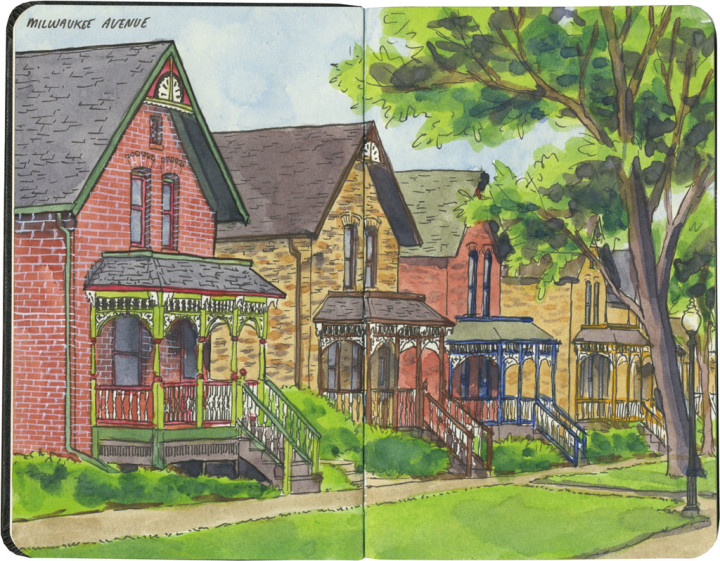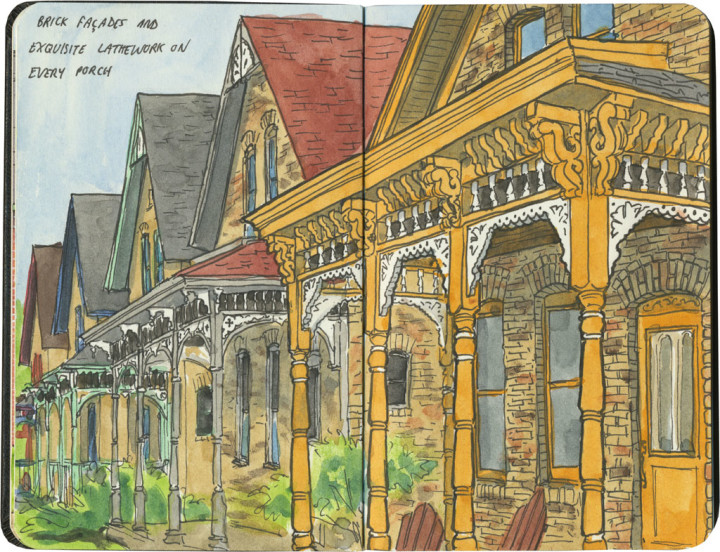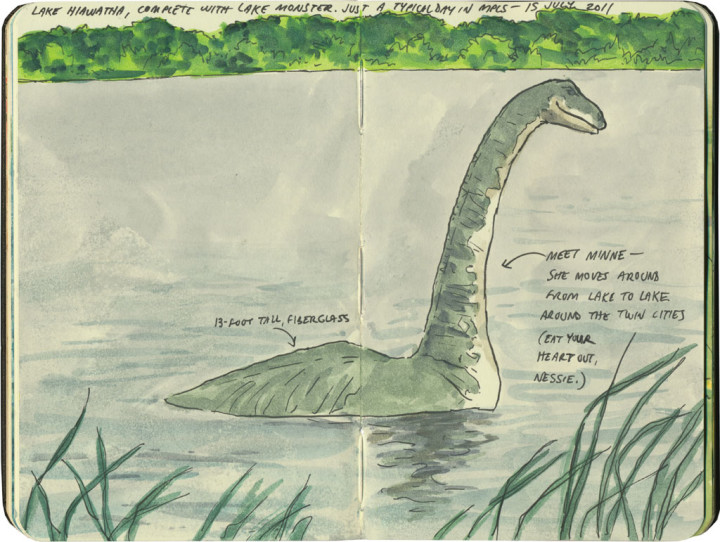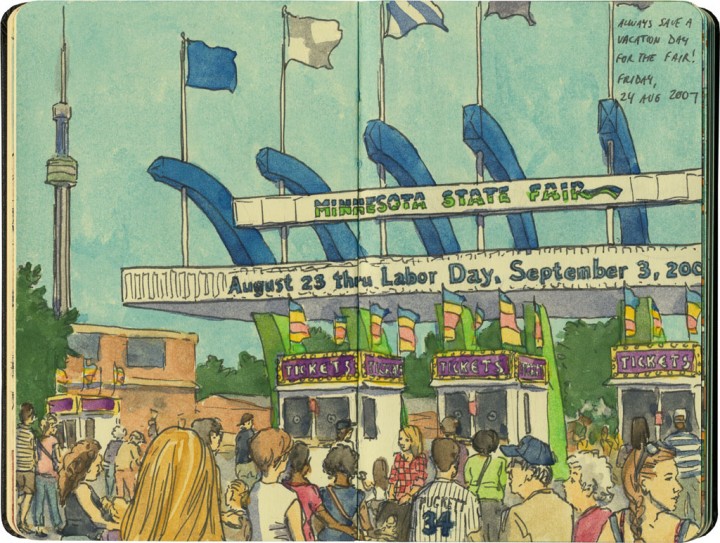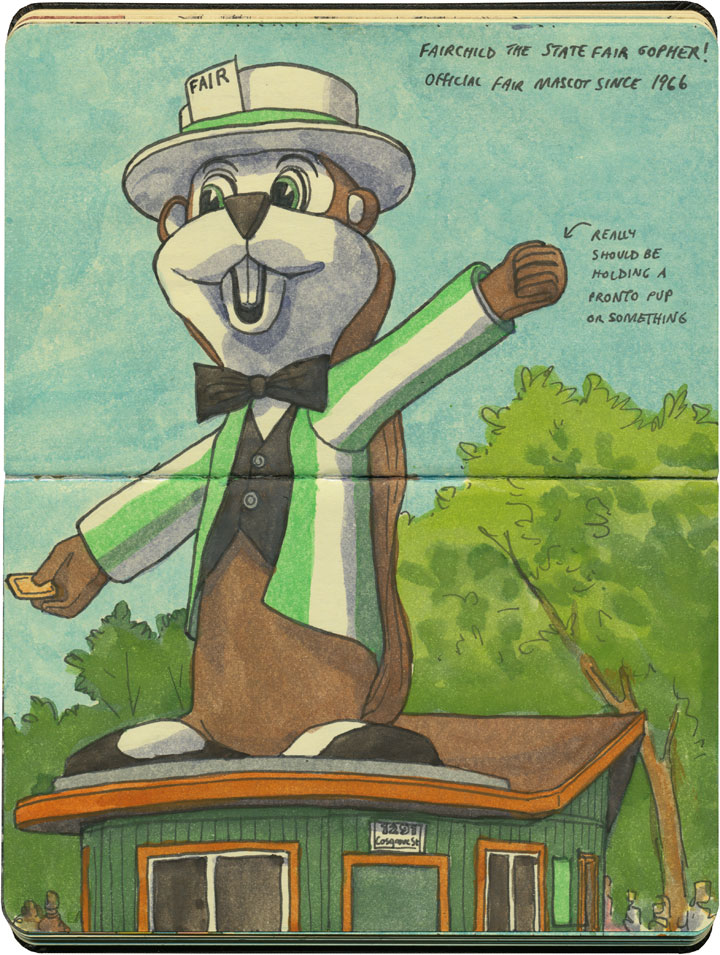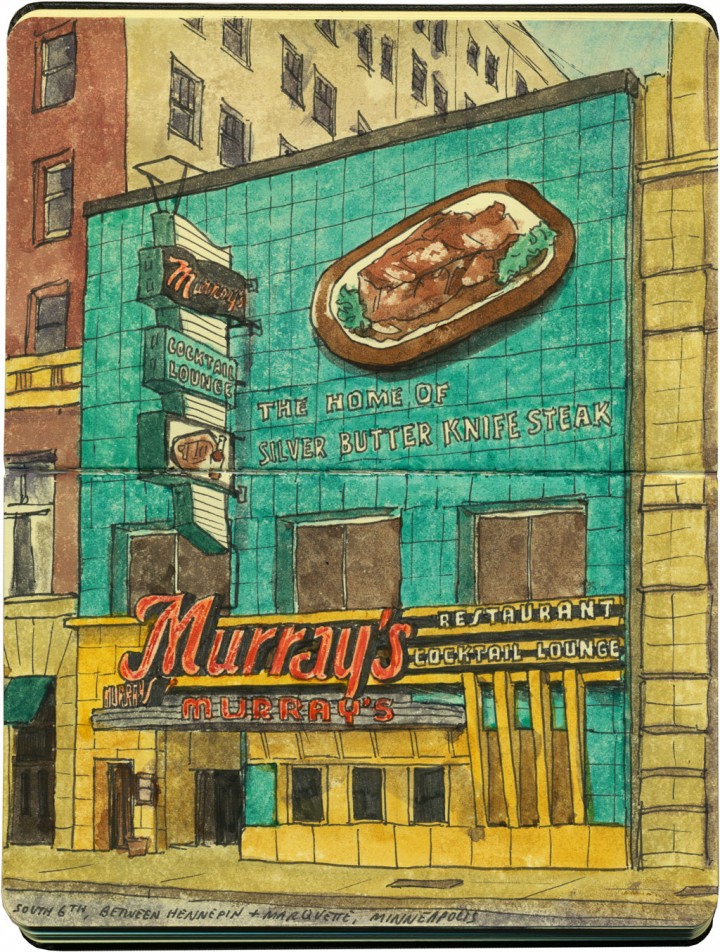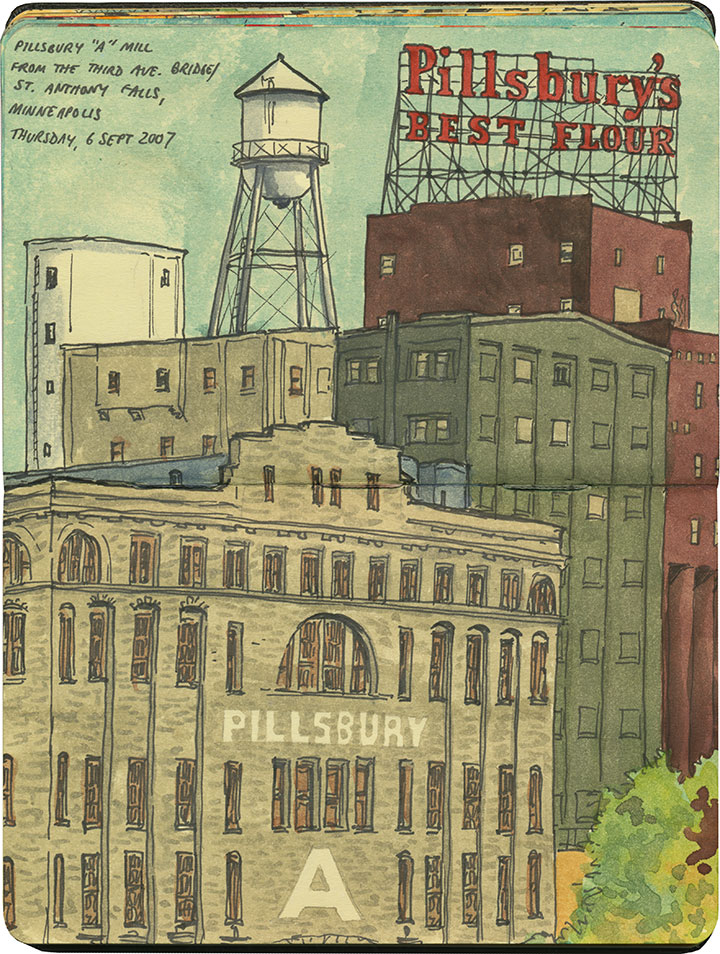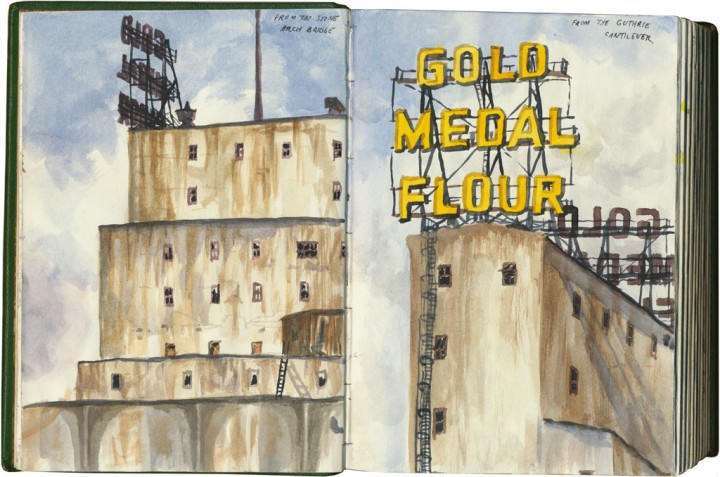Revisiting Ladd’s Addition last week reminded me of another favorite neighborhood of mine. Well, not so much a neighborhood as two perfect blocks: Minneapolis’s Milwaukee Avenue.
Today Milwaukee Avenue is a two-block stretch of pedestrian-only street: originally named 22 1/2 Street, to the unwitting eye it just looks like an alley between 22nd and 23rd. It opens onto the busy Franklin Avenue to the north, but the entrance there is overgrown with shrubbery, so it’s easy to overlook and pass right by. In fact, like Salmon Beach in my own town, I’ve met locals who have lived in the Twin Cities for years and never knew it was there.
If you do know where to look, or you happen to stumble upon one of the entrances, finding Milwaukee Avenue is like stepping into a tiny, different world. To me, it always felt like walking onto the set of an old movie like To Kill a Mockingbird. (I always half expected to meet Boo Radley sitting on a porch somewhere.) And if the street has that movie-set feeling of being slightly artificial, well, that’s because it is.
Milwaukee Avenue started as a row of low-income immigrant housing in the 1880s. Like Ladd’s Addition, it was a planned neighborhood, but to keep them affordable the houses were nearly identical and constructed inexpensively (but well) with brick veneer over timber frames.
The neighborhood started falling into disrepair in the Great Depression, and by the late 1950s the houses were in shambles. Most had no indoor plumbing, and had been modified with ho-made repairs to the point that they bore almost no resemblance to what you see in the sketches above. In 1970 the City of Minneapolis made plans to demolish the whole enclave, but when the residents got wind of it, they took action on their own. In secret they applied to the National Register of Historic Places, and were approved as an historic district in 1974—suddenly the City couldn’t touch them.
Not every house survived the restoration (nine were so far gone they had to be razed), but the ones that did were outfitted with proper plumbing, new foundations and a host of repairs. The one-way street was turned into a tree-lined pedestrian mall. And best of all, the beautiful, original lathework porches, gone from pretty much every structure by then, were replicated and put back in place. So what you see now is a strange and lovely hybrid between historic relic and reimagined replica.
So if you ever find yourself in the Twin Cities, take a stroll down Milwaukee Avenue and transport yourself to a small, private universe. Just be warned that when you step back out onto Franklin Avenue, and the modern world assaults your senses once more, you’ll find yourself looking back over your shoulder with longing.
